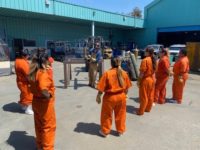The U.S. Army Corps of Engineers has released for public comment long-awaited guidance that officials say provides a framework for the agency to consider a range of benefits broader than cost and economic development for proposed water resource projects.
The Corps' Agency Specific Procedures, proposed earlier this month in the Federal Register, provides guidance on how to implement "principles, requirements and guidelines" for water resource investments, establishing what the agency can and cannot do in evaluating its approaches and recommendations for related projects.
Known as "P&G" and dating to 1983, the guidance was updated in 2014. But U.S. lawmakers included riders in annual appropriations bills that restricted the Corps from implementing it beginning in 2012, even before the update was completed. As a result, the agency could not develop specific procedures to enact the updated guidance until the Water Resources Development Act in 2020 included language directing it to do so.
“Through these procedures, we will continue our efforts to modernize civil works programs by maximizing public benefits and ensuring recommended projects achieve their water management objectives and better reflect community needs and priorities,” said Michael Connor, Assistant Army Secretary for Civil Works, in a statement. “We are committed to integrating economic, environmental and social benefits into our planning and improving the Corps’ ability to build resilience in a broad range of communities, including rural, tribal, and low-income areas.”
The new procedures could potentially bring big changes to the way the agency conducts feasibility studies, according to Todd Bridges, who founded the Corps Engineering with Nature program in 2010 and now is a professor at the University of Georgia Institute for Resilient Infrastructure Systems.
Corps engineers will no longer be hamstrung in their ability to value approaches with benefits that are harder to quantify numerically but still are seen as positive for the environment and communities, Bridges told ENR.
“I think this opens the door for all types of approaches and options,” including nature-based and environmental justice solutions, he said.
Doug Lamont, a former Corps civil works program official who now is a senior advisor at environmental consulting firm Dawson & Associates, said the procedures will give agency engineers more latitude in choosing nonstructural solutions to problems.
He said the most cost-effective solution might be to build a flood wall in a community, but a nonstructural solution such as setback levees and wetlands might be a better option if the wall would bisect an area that functions as a cohesive community.
The National Waterways Conference—which represents industry and contractor groups involved in water resource projects, including port and dredging firms, energy companies and others—is still reviewing the proposal but is initially “encouraged” by the Corps procedures' emphasis on considering multiple benefits for water resource projects, said Julie Ufner, president and CEO. “However, we want to be sure the approach and methodology are consistent and predictable for nonfederal sponsors who invest significant amounts of time and money in these essential projects,” she said.
But individual Corps districts have their own approaches and practices that may not completely harmonize with priorities of Corps headquarters, according to Melissa Samet, legal director for water resources and coasts at the National Wildlife Federation. “I think some Corps districts have viewed themselves as being limited in the approaches they can use and the ways that they value things. Hopefully, this [ASP] will help change that view.”
More guidance and training are essential to ensure the procedures are adopted and properly implemented, Samet said. “It’s a big ship to turn, but I do think that we need to see a change across the board at the agency,” she added.
The Corps will accept public comment on the proposal through April 15.





Post a comment to this article
Report Abusive Comment